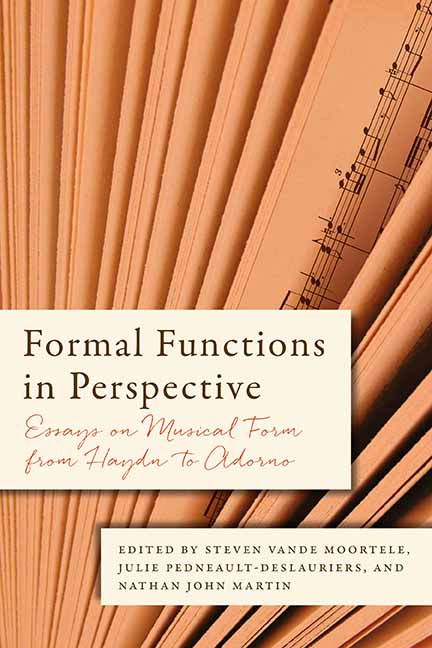Book contents
2 - Mozart’s Sonata-Form Arias
Published online by Cambridge University Press: 26 May 2021
Summary
In his influential 1972 study The Classical Style, Charles Rosen maintains that Mozart's mature operas make comprehensive use of sonata principles: “No description of sonata form can be given,” he writes, “that will fit the Haydn quartets but not the majority of forms in a Mozart opera.” At the opposite extreme, James Webster contends in his 1991 article on Mozart's arias that “a catalogue of formal types in Mozart's Da Ponte operas would include precisely one aria in sonata form,” namely, Susanna's “Venite, inginocchiatevi” (Figaro, no. 12). Between these two poles—and accounting in part for the disparity in their verdicts—lies a rich, and richly contested, scholarly terrain: some two hundred years of competing agendas—political, historiographical, and ideological— whose tectonic shiftings erupted into the analysis of Mozart's operas in the early 1990s. In what follows, I adopt a calculated naiveté in undertaking to bracket off these complexities so as to cast a fresh eye on those of Mozart's operatic arias that are, in some sense, “in” sonata form. My aim, in so doing, is to reach a juste milieu between Webster and Rosen. For if Rosen's commitment to “sonata principles”—with all that phrase's manifold accretions—leads him to subsume even such prima facie unpromising candidates as Figaro's “Se vuol ballare” (Figaro, no. 3), Zerlina's “Batti, batti” (Don Giovanni, no. 12), and Donna Anna's “Non mi dir” (Don Giovanni, no. 23) under the rubric of sonata form, Webster's polemicizing sins in the opposite direction: taken at face value, his injunction would deny the obvious analogies that obtain between the formal shapes of many Mozart arias and the more familiar templates operative in his instrumental music, resemblances that Webster is elsewhere quite ready to acknowledge.
As a starting point, I tabulate some straightforward statistics, counting in particular the proportion of arias in sonata form (in a sense to be clarified momentarily) in generically matched works from the opposite ends of Mozart's later operatic career: first Idomeneo (Munich, 1780) versus La clemenza di Tito (Prague, 1791), and then Die Entführung aus dem Serail (Vienna, 1782) versus Die Zauberflöte (Vienna, 1791).
Information
- Type
- Chapter
- Information
- Formal Functions in PerspectiveEssays on Musical Form from Haydn to Adorno, pp. 37 - 74Publisher: Boydell & BrewerPrint publication year: 2015
Accessibility standard: Unknown
Why this information is here
This section outlines the accessibility features of this content - including support for screen readers, full keyboard navigation and high-contrast display options. This may not be relevant for you.Accessibility Information
- 4
- Cited by
